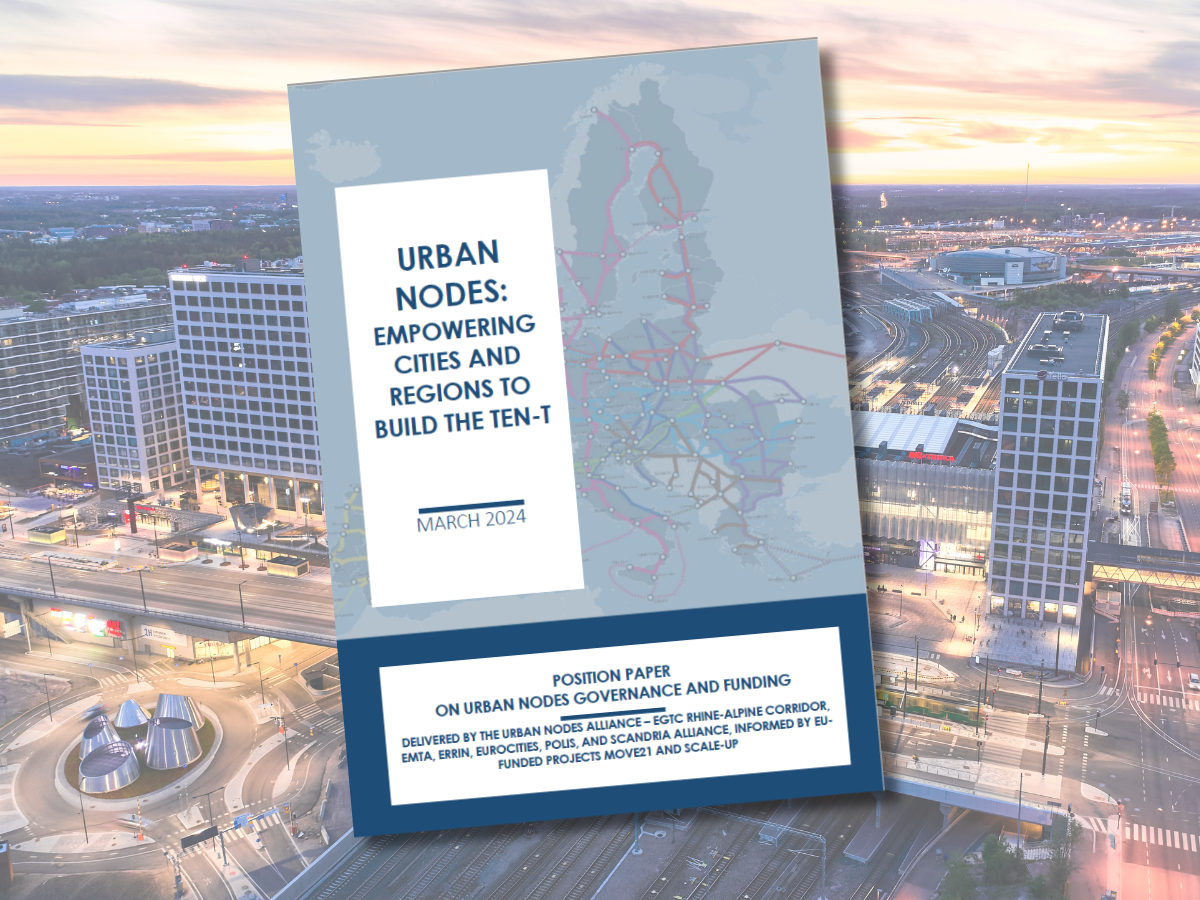Together with leading networks of local and regional authorities, the Scandria Alliance calls for greater support for Urban Nodes to ensure success of the TEN-T.
At the occasion of the Connecting Europe Days 2024, the Urban Nodes Alliance, a collaboration between leading European networks of cities and regions and territorial groupings, has published the position paper ‘Urban Nodes: Empowering cities and regions to build the TEN-T’. The paper outlines recommendations for the necessary governance and funding requirements to ensure Urban Nodes can perform the vital role assigned to them within the network.
Mrs. Tuija Telén, Regional Mayor of Helsinki-Uusimaa (Finland) and vice chair of the Scandria Alliance: “Urban nodes create interactions between long-distance and local and regional traffic flows as well as between different transport modes. As innovation hubs and major centres of economic activity, they are also important drivers of the European Union’s competitiveness. This is why Helsinki-Uusimaa welcomes the reinforced focus on Urban Nodes in the revised TEN-T regulation.
To make the implementation of the new requirements to Urban Nodes a success, it is important that Urban Nodes receive all the support they deserve and have a strong voice on the European and Corridor levels. As a collaboration platform of cities and regions along the Scandinavian-Mediterranean transport corridor, the Scandria Alliance is ready to act as an interface between the Urban Nodes and the Corridor Coordinator and to foster knowledge sharing and peer learning between urban nodes along this Corridor.”
The European Union’s updated Trans-European Transport Network (TEN-T) regulation marks a significant milestone in enhancing mobility and sustainability across Europe. With the identification of 431 Urban Nodes, up from 88, the EU underscores the pivotal role of local levels in transportation infrastructure.
Urban Nodes are crucial to build an effective network
Urban Nodes serve as crucial intersections where different transport modes converge, improving connectivity, resilience, and mobility across regions. By 2027, each node will have a Sustainable Urban Mobility Plan (SUMP) in place, prioritizing sustainability, safety, and accessibility.
Efforts include the development of multimodal passenger hubs by 2030 and at least one multimodal freight terminal per Urban Node by 2040, addressing first and last-mile challenges and enhancing freight transportation.
The networks provide recommendations for effective governance to achieve Urban Nodes’ success, ensuring coordinated efforts and alignment with corridor objectives. All involved stakeholder emphasise that adequate financial resources, including the continuation of the Connecting Europe Facility (CEF) or similar alternative funding schemes, are vital to meet TEN-T requirements.
Capacity building, research, and innovation play a crucial role in optimizing Urban Nodes’ efficiency and effectiveness, fostering collaboration and knowledge sharing among stakeholders. The Urban Nodes Alliance presents itself as a constructive partner for EU institutions, corridors and member states to make the most of the new Urban Nodes approach.
The Urban Nodes Alliance is made up of the following networks and organisations: the
Interregional Alliance for the Rhine-Alpine Corridor EGTC, EMTA, ERRIN, Eurocities, POLIS Network, and the Scandria Alliance.
The Urban Nodes Alliance benefits from insights from the Horizon Europe Projects: MOVE 21 and SCALE-UP. The working party was chaired by Île de France.
Download the position paper here.
